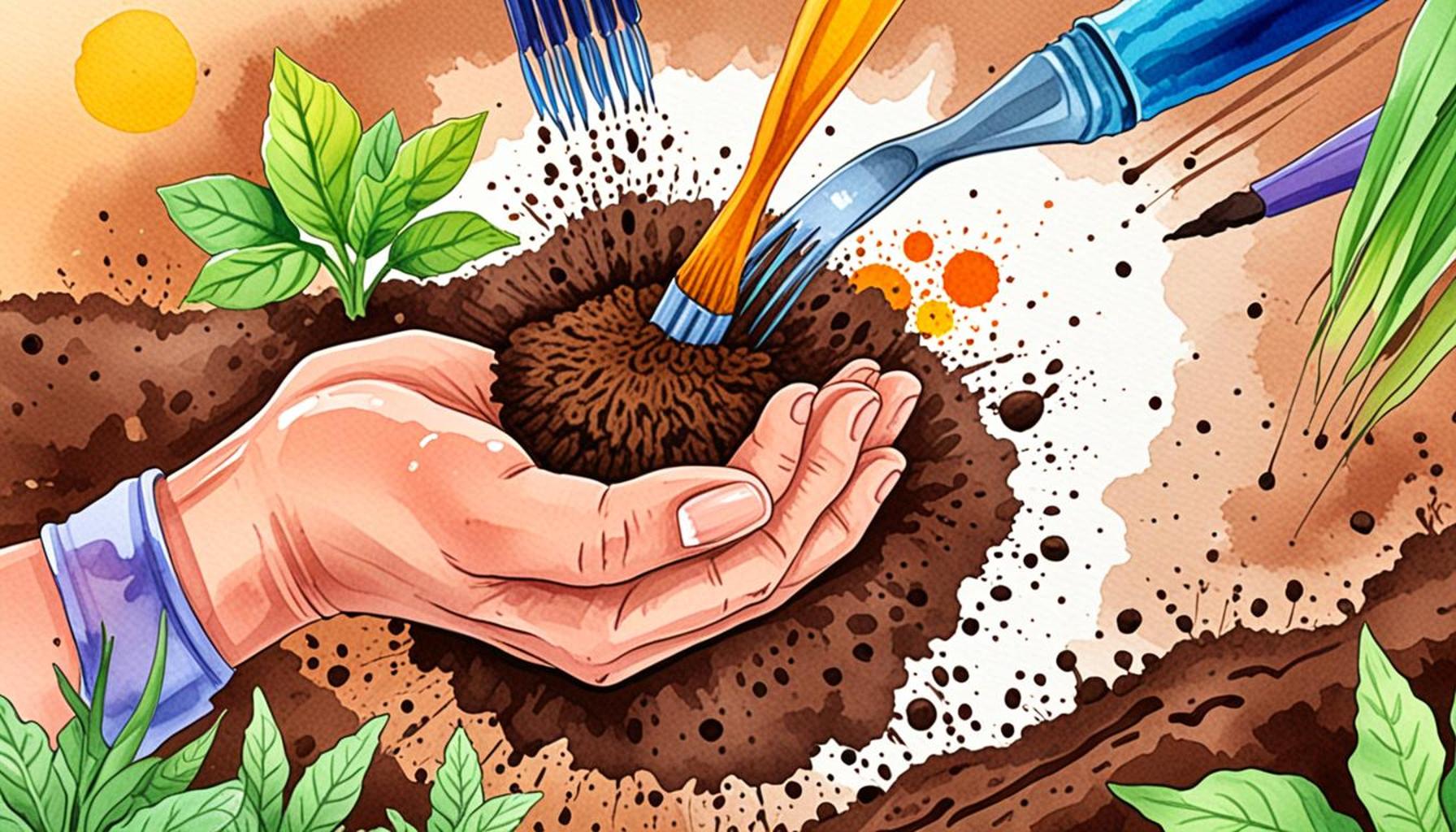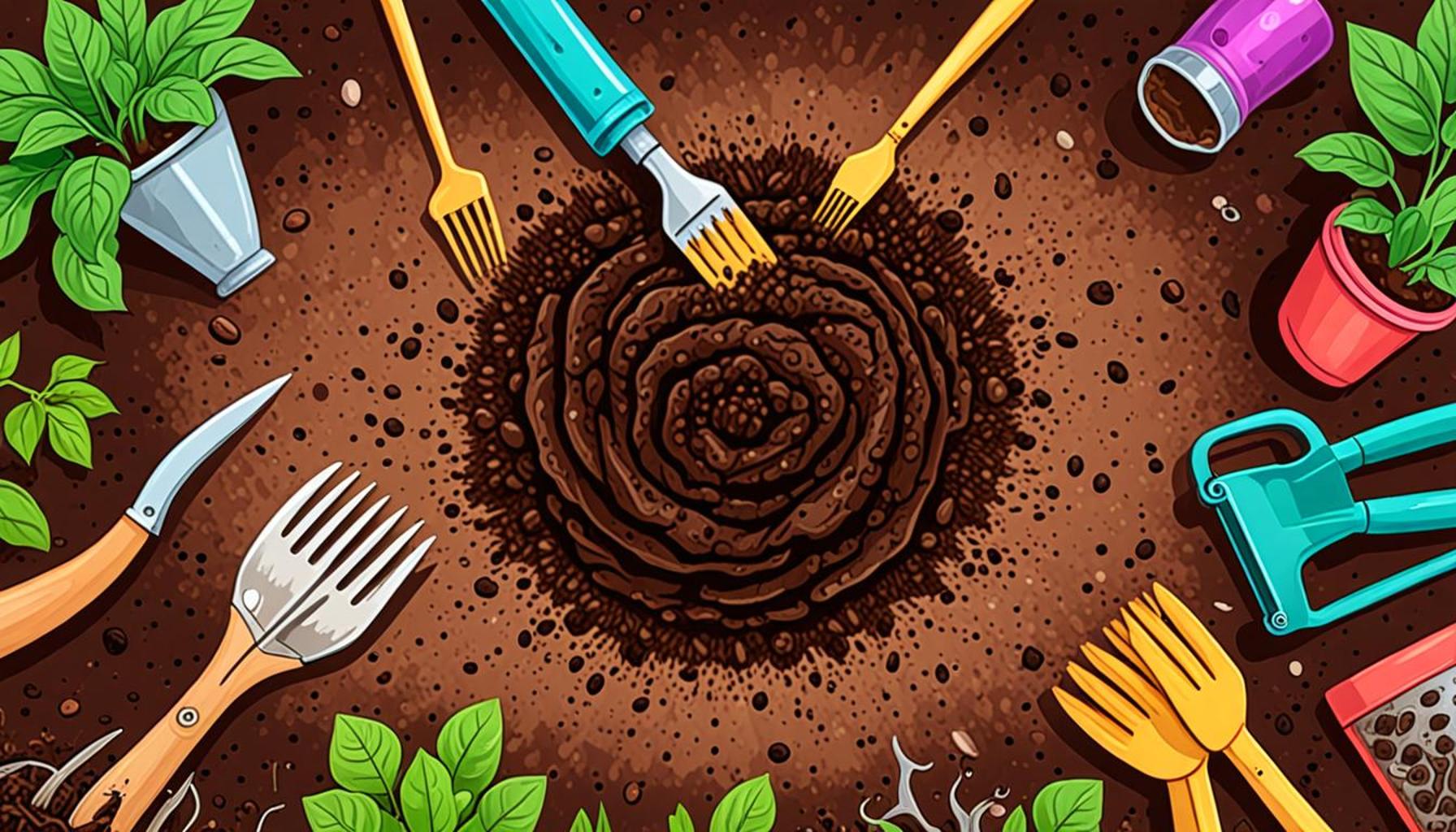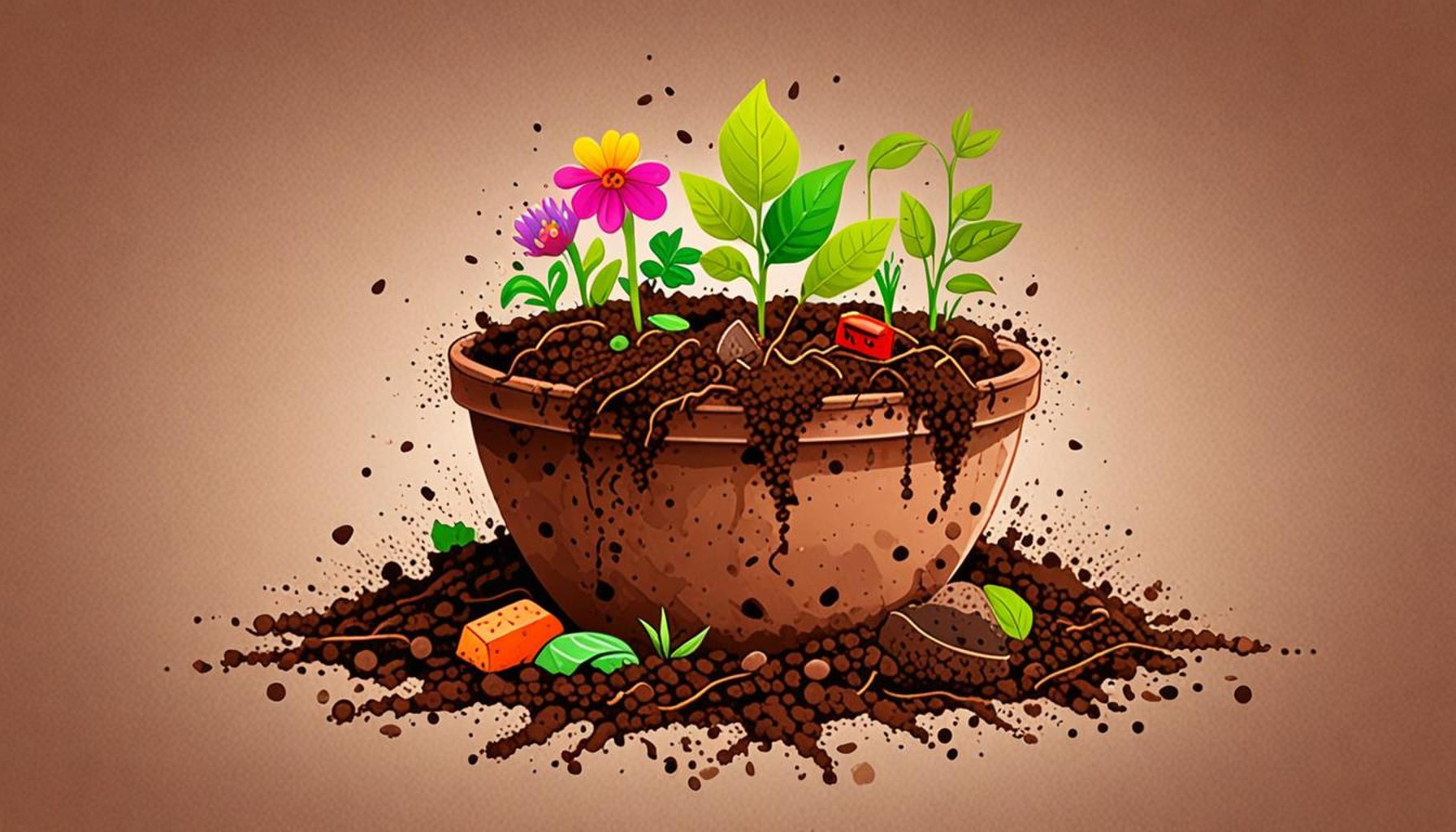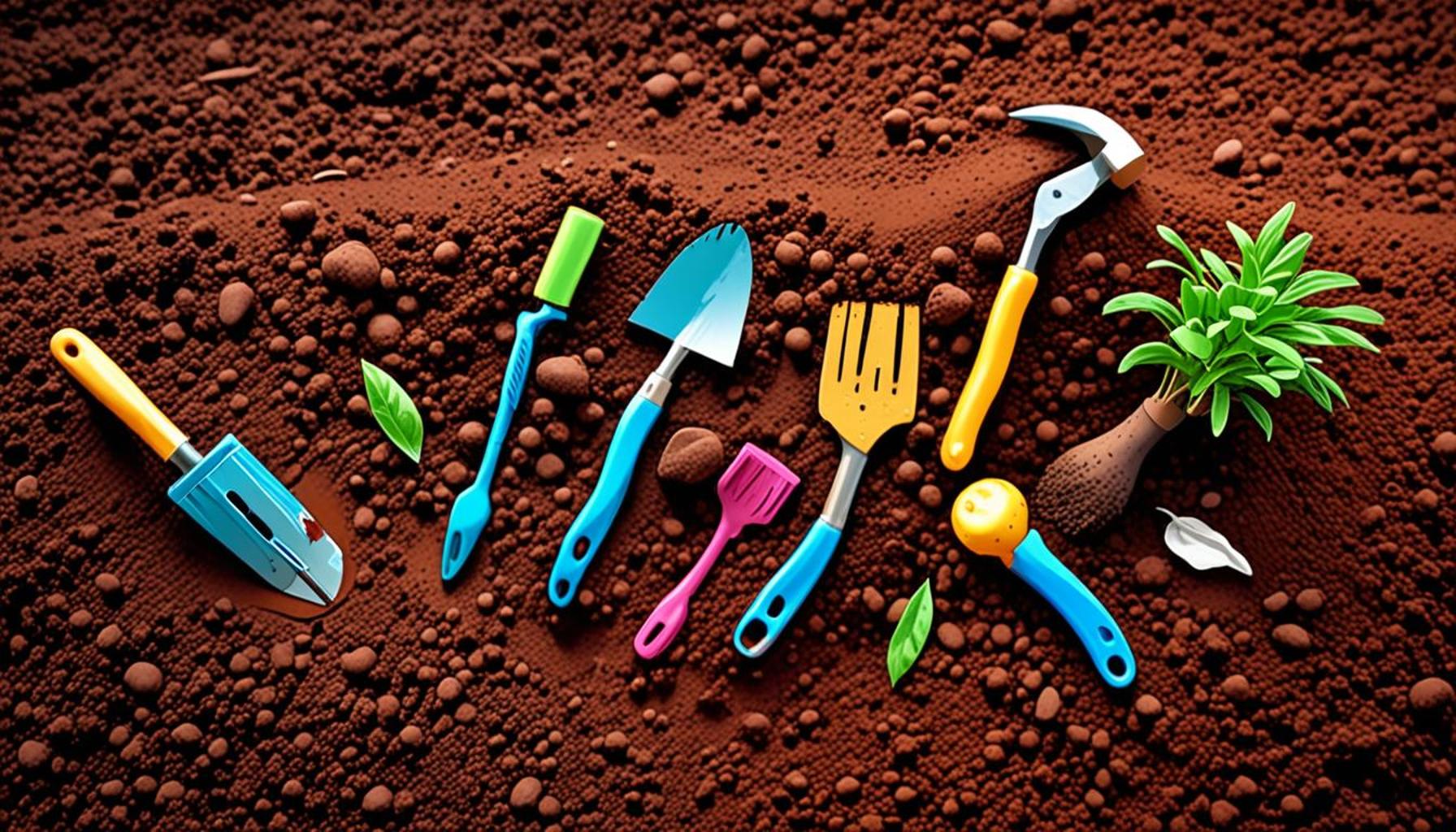How to Test and Improve Soil Quality Before Planting

Understanding Soil Quality
Before planting any garden or crop, knowing your soil’s health is essential. Soil quality directly influences plant growth, nutrient uptake, and ultimately, your gardening success. Yet, many gardeners overlook this critical step, often leading to disappointing yields. Much like how the foundation affects a building’s stability, the soil serves as the foundation for your garden’s ecosystem, impacting everything from root development to water retention.
Key Factors to Evaluate
- pH Levels: Determining whether your soil is acidic, neutral, or alkaline is paramount. A pH level of 6 to 7 is generally considered ideal for most crops. For example, if your soil’s pH is too low (acidic), it can hinder nutrient absorption, especially calcium and magnesium, leading to poor plant growth.
- Nutrient Content: Conducting a soil test is vital to check for essential nutrients like nitrogen, phosphorus, and potassium—often referred to as N-P-K. These nutrients play a critical role in plant growth; nitrogen fuels green, leafy growth, phosphorus encourages strong root development and flowering, and potassium helps with overall plant health.
- Texture: Understanding the composition of sand, silt, and clay in your soil can significantly impact its drainage and nutrient retention. For instance, sandy soils drain quickly but lack nutrients, while clay soils retain moisture but may become compacted and inhibit root growth.
- Microbial Activity: Assessing the presence of beneficial soil organisms is crucial for a thriving garden. Healthy soil is alive with bacteria, fungi, and earthworms that aid in the decomposition of organic matter and help enhance nutrient availability to plants.
By evaluating these factors, you can paint a comprehensive picture of your soil’s health. Additionally, numerous soil testing kits are available at garden centers and online, making it easier than ever for backyard gardeners and farmers alike to receive detailed insights. With this knowledge in hand, you will be better equipped to improve your soil quality based on its specific needs and the types of plants you wish to cultivate.
Improvement Strategies
- Organic Matter Addition: Enrich your soil by incorporating compost or well-rotted manure. These organic materials improve soil structure, enhance moisture retention, and provide essential nutrients. This practice is particularly beneficial for gardeners who rely on raised beds, as it dramatically improves their productivity.
- Crop Rotation: Implementing diverse planting strategies not only helps in pest management but also enhances soil structure. By rotating crops each season, you can prevent nutrient depletion from specific plants, fostering a healthier soil ecosystem.
- Cover Cropping: During periods when your garden is not in use, consider using cover crops like clover or rye, which improve soil quality. These plants help suppress weeds, deter pests, and contribute vital nutrients back to the soil when tilled under.
Effective soil management not only fosters a thriving garden but also contributes to long-term sustainability. The journey to enhance your soil quality is ongoing, as the environment and your gardening practices evolve. By embracing the right knowledge and strategies, you can cultivate a flourishing habitat for your plants, resulting in bountiful harvests, thereby experiencing the true essence of productive gardening.
DISCOVER MORE: Click here for essential tools
Testing Soil Quality: The First Step to a Thriving Garden
The foundation of a productive garden lies in the health of its soil, making soil testing an essential first step for any gardener. By assessing various attributes of the soil, you gain invaluable insights that will guide you in implementing effective strategies for improvement. Understanding the unique qualities of your soil not only maximizes plant growth but can also prevent common gardening challenges.
How to Conduct a Soil Test
Conducting a soil test may sound daunting, but it’s a straightforward process that can yield significant benefits. Here’s a step-by-step guide to help you through the process:
- Collecting Samples: Start by using a clean trowel or spade to gather soil samples from different locations in your garden. Aim for areas where you plan to plant. It’s advisable to take samples from the top 6 to 12 inches of soil. Combine these samples in a clean bucket to create a composite sample.
- Choosing a Testing Method: You can choose between DIY soil testing kits available at garden centers or send a sample to a local extension office or laboratory. Each method has its pros and cons; while DIY kits provide instant results, lab tests can offer detailed nutrient profiles and organic matter analysis.
- Interpreting Results: Once you have your results, read them carefully. Look for pH levels, nutrient levels (N-P-K), and any recommendations for amendments. Most importantly, understand how these factors relate to the specific plants you wish to grow.
Many local agricultural extensions offer soil testing services at minimal costs, and they often provide practical recommendations based on regional soil characteristics. Additionally, they can offer personalized advice tailored to your planting goals, such as vegetable gardens or flower beds.
The Importance of pH in Soil Testing
Soil pH is one of the most critical factors to analyze in your test. An optimal pH level, which typically ranges from 6.0 to 7.0 for most plants, affects nutrient availability significantly. For example, if your soil is too acidic (below 6), certain nutrients might become less available, affecting plant vigor. Conversely, alkaline soil (above 7) can also limit the absorption of essential minerals. Testing the pH not only informs you about current conditions but helps you take necessary actions to amend the soil.
Once you have an understanding of your soil quality through testing, the next logical step is to address any deficiencies. Whether it’s amending pH, boosting nutrient levels, or enhancing texture, your knowledge positions you to take your garden to the next level. The journey to lush, flourishing plants doesn’t have to be filled with guesswork; instead, you can rely on the information gathered through effective soil testing.
Soil Testing Methods
Before you embark on the journey of planting, it is essential to understand the quality of your soil. Testing your soil can reveal valuable insights about its pH level, nutrient content, and microbial activity. There are several methods you can utilize to attain accurate soil assessments:1. DIY Soil Testing Kits: These kits, available at garden centers, can provide a quick snapshot of essential soil characteristics. They usually test for pH, nitrogen, phosphorus, and potassium levels.2. Laboratory Testing: For more precise results, sending a soil sample to a professional laboratory is recommended. Here, experts will conduct thorough analyses, including micronutrient assessments and organic matter content.3. Visual Inspection: Sometimes, a basic visual evaluation can be insightful. Observe the soil texture, color, and the types of plants already growing; this can help gauge its fertility and drainage capacity.4. Soil Moisture Tests: It is vital to assess how well your soil retains moisture. Using a simple soil moisture meter can help you determine whether your soil is too dry or overly saturated.
Improving Soil Quality
Once testing is complete, focus on enhancing your soil quality. Here are some effective strategies:1. Organic Amendments: Adding compost or well-rotted manure can significantly boost soil fertility and improve its structure. These amendments enrich the soil with essential nutrients and improve its ability to retain moisture.2. Cover Crops: Planting cover crops, such as clover or vetch, during off-seasons can prevent erosion, suppress weeds, and enhance soil health. These plants also fix nitrogen back into the soil, which is beneficial for subsequent crops.3. Mulching: Layering organic materials, like straw or wood chips, on the soil surface can retain moisture, regulate temperature, and eventually decompose to enrich the soil.4. pH Adjustments: If your soil pH is too high or low, you can adjust it by adding lime to increase pH or sulfur to lower it. This amendment ensures that essential nutrients are available for plant uptake.By understanding your soil through effective testing and actively improving its quality, you set the stage for vibrant, healthy planting and bountiful harvests.
| Category | Importance |
|---|---|
| Soil Testing | Identifies nutrient levels, pH, and soil texture |
| Soil Amendments | Enhances fertility, structure, and moisture retention |
With these methods and improvements in mind, you will be better equipped to cultivate a thriving garden.
DIVE DEEPER: Click here to learn more
Improving Soil Quality: Taking Action for Optimal Growth
After gathering and interpreting your soil test results, the next crucial step for any gardener is to implement strategies aimed at improving soil quality. A foundational understanding of your soil’s deficiencies empowers you to create an environment where plants can thrive. Below are effective techniques to enhance soil quality before planting.
Amending Soil Based on Test Results
Soil amendments play a vital role in rectifying deficiencies revealed in your soil test. The two most common types of amendments are organic and inorganic.
- Organic Amendments: Compost, well-rotted manure, and leaf mold are excellent choices that enrich the soil with nutrients and improve its texture. When using compost, aim to mix in 2-4 inches into the topsoil, enhancing microbial activity and providing a slow release of nutrients as it breaks down.
- Inorganic Amendments: Based on your soil’s nutrient profile, you may need specific fertilizers. For instance, if your soil test reveals a nitrogen deficiency, a nitrogen-rich fertilizer, such as blood meal or fish emulsion, can effectively meet the need. Always follow recommended application rates to prevent over-fertilization.
Improving Soil Structure
Soil structure directly influences drainage, aeration, and plant root growth. If your soil is too compacted, water and nutrients struggle to permeate. To address this, consider practices like:
- Mulching: Applying organic mulch, like bark or straw, helps retain moisture and improves soil structure over time as it decomposes.
- Cover Cropping: Planting cover crops such as clover or vetch during the off-season can prevent soil erosion, improve nitrogen fixation, and enhance soil structure through root growth.
- Tilling Sparingly: While tilling can help break up compacted soil, over-tilling may degrade soil structure. Instead, consider practices like no-till gardening, which maintains the integrity of soil structure while still creating a planting area.
The Role of Soil Microorganisms
Soil is buzzing with life—microscopic organisms like bacteria, fungi, and earthworms play significant roles in nutrient cycling and soil health. To support and boost these microorganisms, you should:
- Minimize Chemical Inputs: Reduce reliance on synthetic fertilizers and pesticides, which can harm beneficial soil life. Focusing on natural practices encourages a thriving soil biome.
- Encourage Biodiversity: Growing a diverse array of plants, including native species, enhances microbiome diversity and strengthens the soil ecosystem.
Regular Monitoring and Adjustment
An essential part of maintaining soil quality is the practice of regular monitoring. Consider re-testing your soil every three to four years, especially if you’ve made significant amendments or changes in usage. This way, you can gauge the effectiveness of your improvement strategies and adjust as necessary to fit your evolving gardening needs.
Utilizing Technology for Soil Improvement
In today’s tech-savvy age, leveraging smart technology can enhance your soil management practices. Soil sensors can provide real-time data on moisture levels, pH, and nutrient content, allowing for precise adjustments. Using apps or tools designed for gardeners can simplify the tracking of your soil’s health over time and prevent issues before they compromise your garden’s success.
Through diligent testing and targeted improvement efforts, you can transform your garden’s soil into a rich and fertile foundation that supports healthy and vigorous plants.
DISCOVER MORE: Click here to learn about effective mulching techniques
Conclusion: Cultivating Soil for Success
In conclusion, understanding and enhancing soil quality is pivotal for any gardener aiming to create a flourishing garden. By utilizing soil tests, gardeners can pinpoint specific deficiencies and tailor their approach with targeted amendments, whether they are organic or inorganic. These amendments not only supply necessary nutrients but also bolster soil structure, promoting better drainage and root development.
Moreover, acknowledging the crucial role of soil microorganisms cannot be overstated. By minimizing chemical inputs and fostering biodiversity, you can nurture a thriving ecosystem that actively contributes to soil health. Regular monitoring, including re-testing your soil every few years, ensures that your gardening practices remain aligned with your soil’s evolving needs.
As technology continues to advance, integrating smart tools into your gardening routine allows for precise soil management—empowering you to make data-driven decisions that cater to your garden’s requirements. Leveraging these innovations alongside traditional methods effectively prepares the groundwork for successful planting.
Ultimately, investing time and effort into improving soil quality before planting is an investment in the future of your garden. A well-prepared soil not only enhances the health and vitality of your plants but also contributes to a sustainable gardening practice that can reap benefits for years to come. Embrace this journey, and watch your garden thrive.


